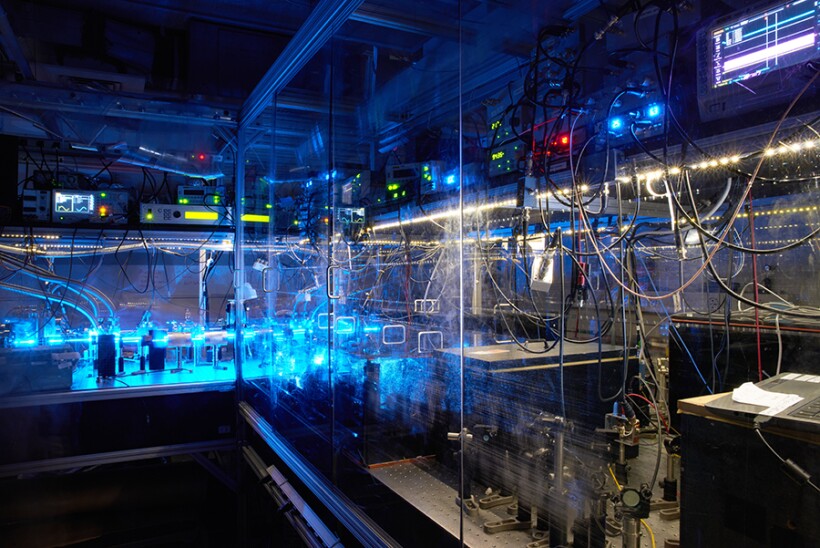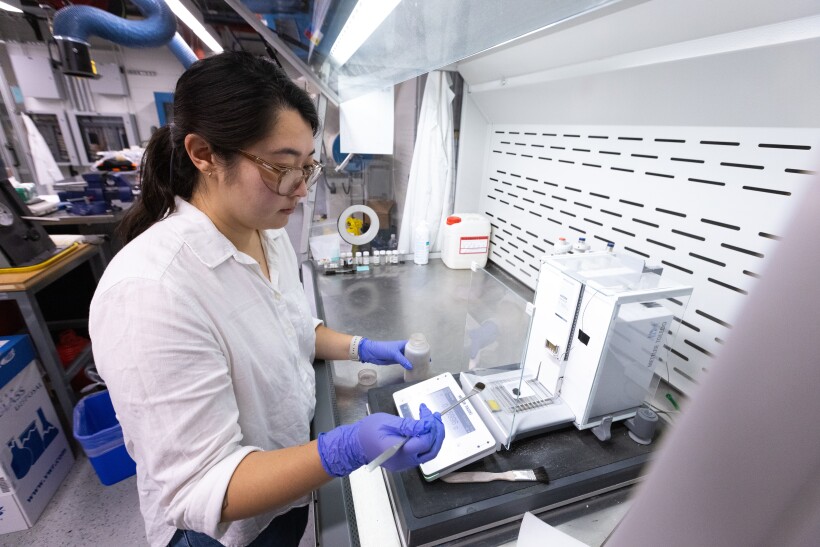A Tour of Denver-Area Science Powerhouses
2025 Physics and Astronomy Congress Logo.
AIP
One of the highlights of SPSCon is the scientist-led, behind-the-scenes tours of science hubs. Years after attending a congress, former students still reminisce about seeing incredible facilities and learning about new science and technology where it’s happening. The 2025 Congress will offer a wide variety of tour options in scenic Colorado.
Many tours will be the day before the congress officially kicks off, and some have limited space or visitor restrictions, so check the details, register early, and plan your travel accordingly. And if you can’t attend a tour in person, stay tuned. Students will be sharing their photos and experiences in SPS publications after the fact, so you’ll still get a taste of the awesomeness. Here’s a peak at some of what’s in store.
University Sites
As part of the Colorado School of Mines tour, attendees will head down into the Edgar Mine. They’ll visit the general mining operations areas, as well as specific mining sites dedicated to neutrino studies and the impact of high-energy radiation on quantum information devices. Attendees will also visit research facilities above ground, interacting with Mines students and faculty who are studying electroweak interactions, light-matter interactions, nanophotonics, quantum materials and devices, and high-energy astroparticle physics, among other topics.
A special feature of the Colorado State University tour will be a visit to the laboratory housing the Advanced Laser for Extreme Photonics (ALEPH), a petawatt-class ultra-short-pulsed laser. Students will also have opportunities to engage with researchers studying laser spectroscopy of trapped, highly charged ions, ultracold neutral plasmas, nanomagnetism, vortex dynamics, neutrino interactions, ultra-high-energy cosmic rays, and quantum materials at the atomic level.

At a Colorado State University lab, researchers in Dylan Yost’s group use ultrastable lasers for high precision spectroscopy of hydrogen, and occasionally other simple atoms.
Photo courtesy of Yost.
National Research Facilities
NIST, the National Institute for Standards and Technology, is America’s national metrology laboratory under the Department of Commerce. Formed in 1901, it’s one of the nation’s oldest—yet still cutting edge—physical science laboratories. Today, innumerable products and services rely on technology, measurements, and standards provided by NIST. At its Boulder location, work centers on advanced atomic clocks, microfabrication, computer chips, communications technology, quantum information, and technology.

NIST-F4 is a cesium fountain atomic clock under evaluation at NIST Boulder. Once the evaluation is complete, NIST-F4 will contribute to coordinated universal time (UTC) and calibrating next-generation atomic optical clocks.
Photo by R. Jacobson/NIST.
NOAA, the National Oceanic and Atmospheric Administration, advances our understanding of the Earth’s environment and manages US ocean, coastal, and Great Lakes resources. Its Boulder location is home to research laboratories, the National Centers for Environmental Information, the local forecasting office for the National Weather Service, and the Space Weather Prediction Center. The tour will include visits to the Weather Forecasting Office, the Space Weather Prediction Center, the Global Monitoring Laboratory, and the Science on a Sphere theater, where visualizations of planetary data are projected onto a giant sphere.

Visitors tour NOAA.
Image credit: NOAA.
Work at NREL, the National Renewable Energy Laboratory, is in service of a clean energy future. The lab focuses on three primary threats facing humanity: climate change, pollution, and biodiversity loss, by advancing research and innovation through strategic partnerships with companies, academic institutions, nonprofits, and government agencies. During the tour, attendees will visit a variety of research labs, engage directly with staff scientists, and discuss career paths in energy and sustainability.

Chae Jeong-Potter weighs a catalyst used to capture and convert CO2 in the Fuel Synthesis Catalysis Laboratory (FSCL).
Photo by Agata Bogucka/NREL.
And More
Those who love scenic outdoor activities and music will appreciate the unique opportunity for an acoustic tour of Red Rocks Park and Amphitheatre. Along with a hiking excursion, the tour will include discussions of the park, the acoustics of the legendary amphitheater, and the area’s fascinating history.

The unique Red Rocks Amphitheater is one of the most popular outdoor venues in the United States.
Shutterstock



